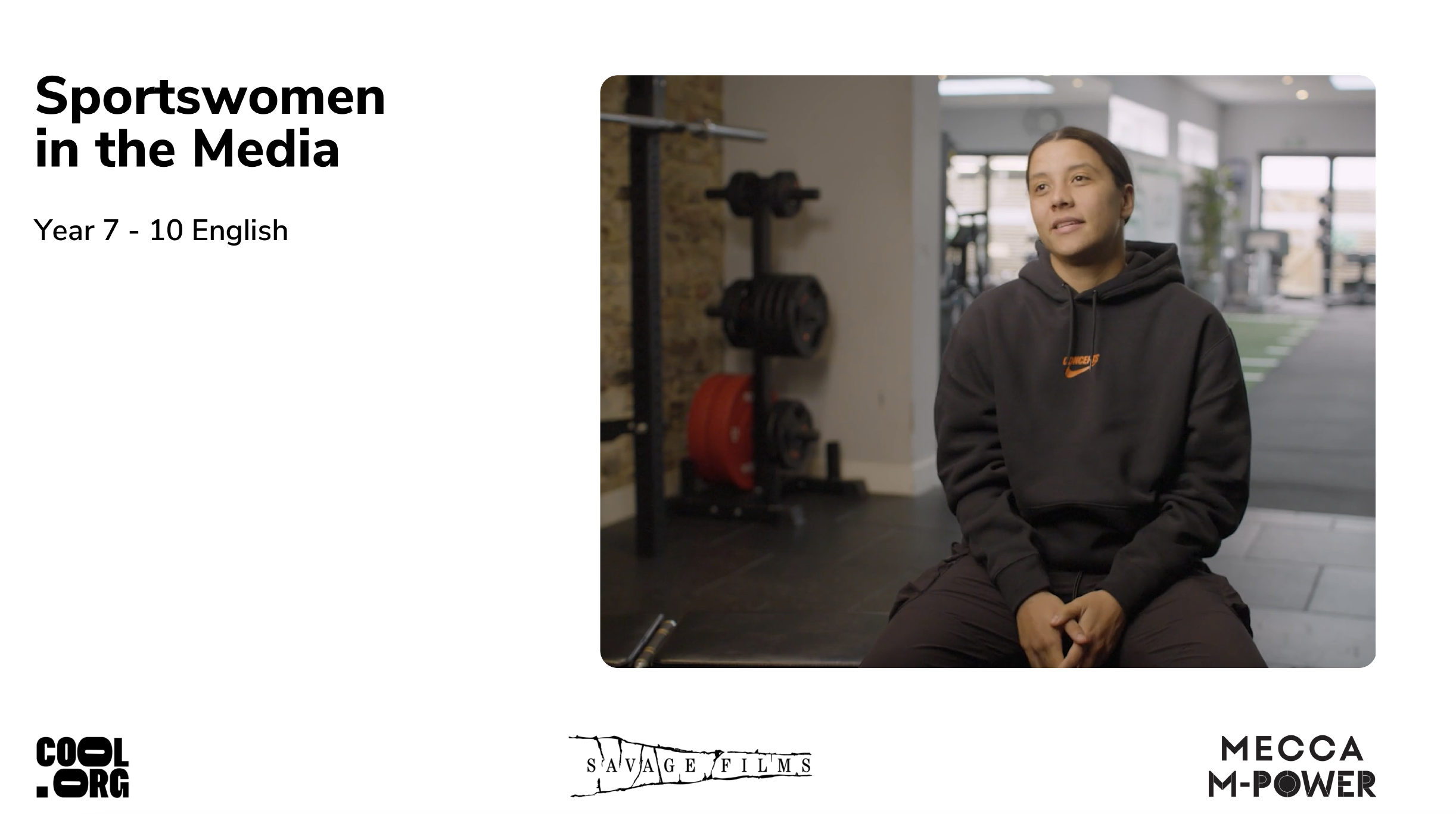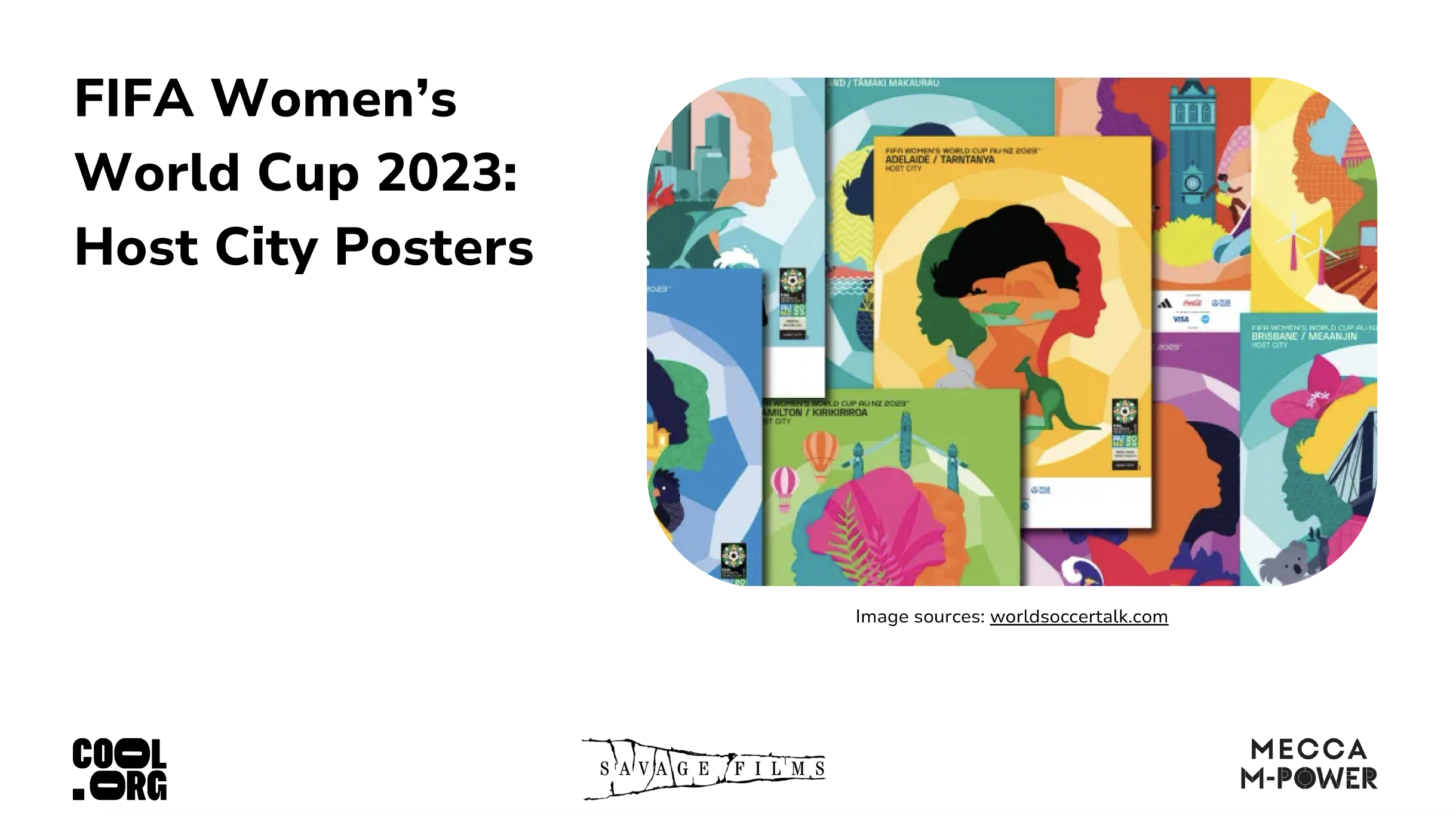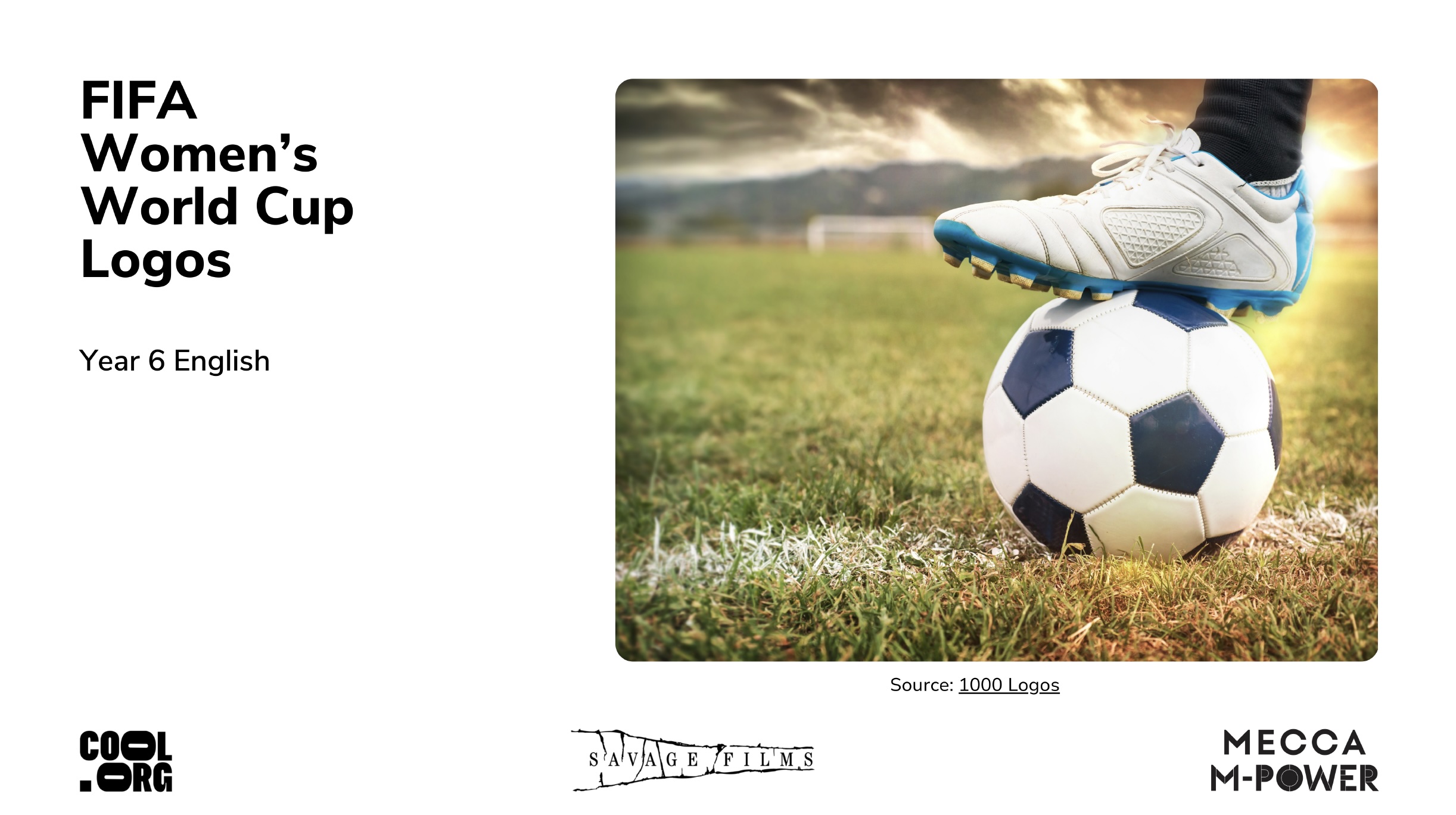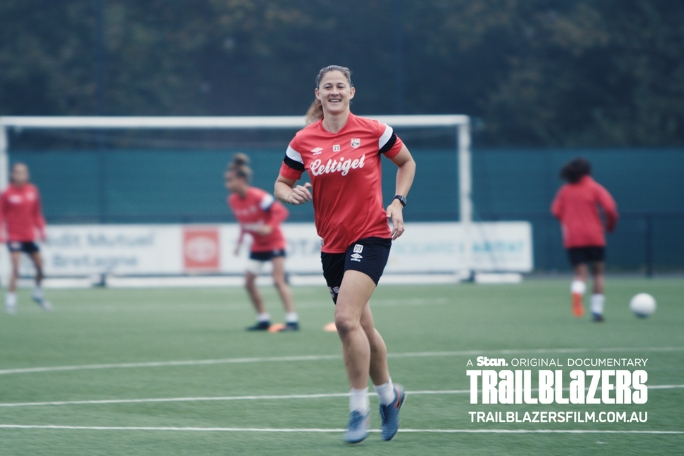Lesson summary
Students will examine current and past World Cup logos exploring the elements and design choices and what impacted these choices. Students will examine the 2023 World Cup posters and the different elements present. Part of this is the inclusion of First Nations text and artwork. They will design a poster for the World Cup if it were to be held in their city.
Learning intentions:
Students will...
- identify how context is represented in media texts.
Success criteria:
Students can...
- identify elements of media texts/artworks and how they display context
- create their own media.
Lesson guides and printables



Curriculum links
Select your curriculum from the options below.
Lesson details
Skills
This lesson is designed to build students’ competencies in the following skills:
- creative thinking
- critical thinking
- communication
- cultural understanding
- reflection
Curriculum Mapping
Australian Curriculum (v9.0) content description:
Year 6 English
- Examine texts including media texts that represent ideas and events, and identify how they reflect the context in which they were created. (AC9E6LY01)
Year 6 Media Arts
- Explore ways that media languages and media technologies are used in media arts works and practices across cultures, times, places and/or other contexts. (AC9AMA6E01)
- Use media languages, media technologies and production processes to construct media arts works that communicate ideas, perspectives and/or meaning for specific audiences. (AC9AMA6C01)
General capabilities: Literacy, Personal and Social Capability
NSW Curriculum outcomes:
- EN3-UARL-02 - Analyses representations of ideas in literature through genre and theme that reflect perspective and context, argument and authority, and adapts these representations when creating texts.
Cross-curriculum priority: Aboriginal and Torres Strait Islander Histories and Cultures, Sustainability
Relevant parts of Year 6 achievement standards:
English
- They read, view and comprehend different texts created to inform, influence and/or engage audiences.
- They identify similarities and differences in how ideas are presented and developed including through events, and how texts reflect contexts.
- They explain how language features including literary devices and visual features influence audiences.
Media Arts
- Students explain how media languages and media technologies are used in media arts works they construct and/or experience.
- They describe how media artworks created across cultures, times, places and/or other contexts communicate ideas, perspectives and/or meaning.
- Students use media languages, and media technologies and production processes to construct representations in media artworks for specific purposes and audiences.
Level of teacher scaffolding: Medium - facilitate class discussion.
UN Sustainable Development Goals
UN SDG 10: Reduce inequality within and among countries
- Target 10.2: By 2030, empower and promote the social, economic and political inclusion of all, irrespective of age, sex, disability, race, ethnicity, origin, religion or economic or other status
Resources Required
- Device to show Women in Sports Media visual explainer and examples/websites
- Student device/equipment for poster design
Additional Info
Trailblazers is a Savage Films, Milestone Films, and LM Films production by Director/Producers Maggie Miles and Maggie Eudes and Producer Lucy Maclaren.
Trailblazers tells the story of the fight for equality by Australia’s female footballers. It celebrates the rise of Australian women’s football from the early days of paying-to-play in front of small crowds to appearing in sold-out stadiums, watched by over 11 million people at the 2023 FIFA Women’s World Cup.
The Cool.org resources and impact campaign are supported by major partner MECCA M-POWER and driven by Documentary Australia. The Trailblazers campaign aims to build momentum for further progress in gender equality and leadership and to increase investment and opportunities for women and girls to participate in sports.
If Trailblazers has inspired your students to take action, they can #Blaze a Trail for gender equality by take part in campaigns and sharing their commitment with the world.
Related Professional Learning
Quick summary: This course will introduce you to tools and methods for increasing people’s willingness to participate in change in your classroom, school or organisation. You will learn the basics of behavioural science, shared by international experts, different techniques that can increase people’s adaptability in times of change, and how to create a culture where people are more willing to participate in change.


Welcome back!
Don't have an account yet?
Log in with:
Create your free Cool.org account.
Many of our resources are free, with an option to upgrade to Cool+ for premium content.
Already have an account?
Sign up with:
By signing up you accept Cool.org's Terms and Conditions(Opens in new tab) and Privacy Policy(Opens in new tab).